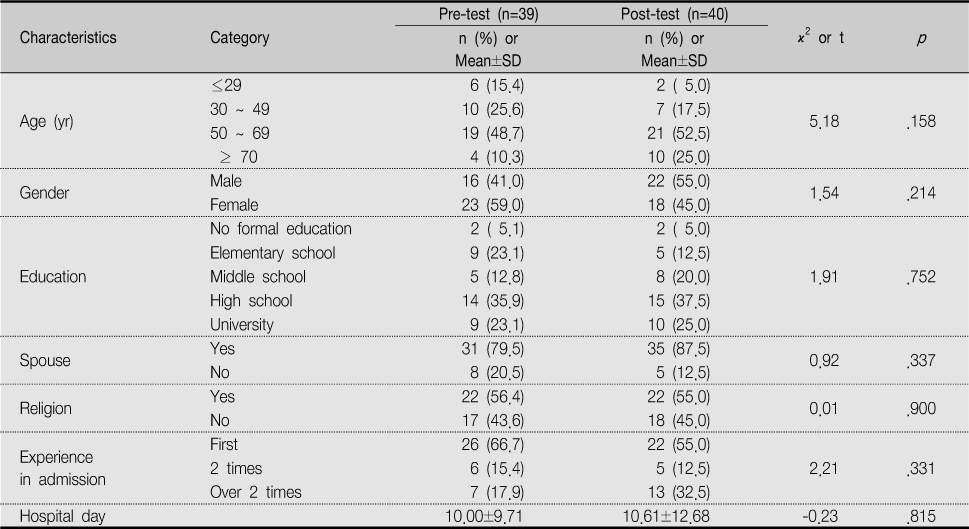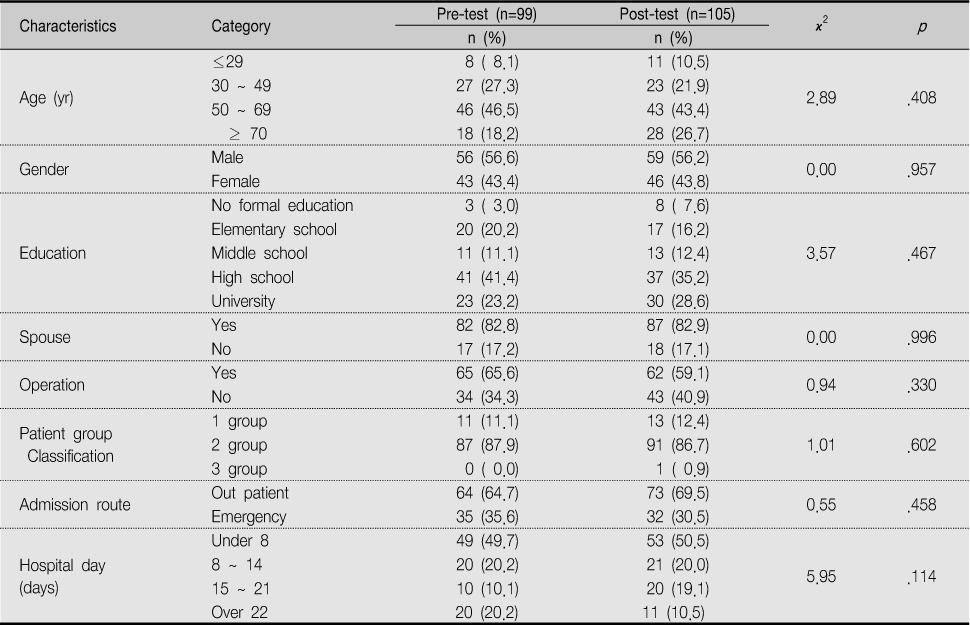1Department of Nursing, Korean Bible University, Korea.
2Chung-Ang University Healthcare System, Korea.
Copyright © 2013 Korean Academy of Nursing Administration




Homogeneity Test for General Characteristics of the Patient Satisfaction Survey Questionnaire (N=79)
Homogeneity Test for General Characteristics Patients Measured for Direct Nursing Care Time (N=204)
Comparison of Patient Satisfaction Before and After Application of the Modified Primary Nursing System (N=79)
Comparison of Nurse Job Satisfaction Before and After Application of the Modified Primary Nursing System (N=19)
Direct Nursing Care Time per Patient for 24 hours Using the Conversion Index for Korean Patient Classification System-1 Scores (N=204)